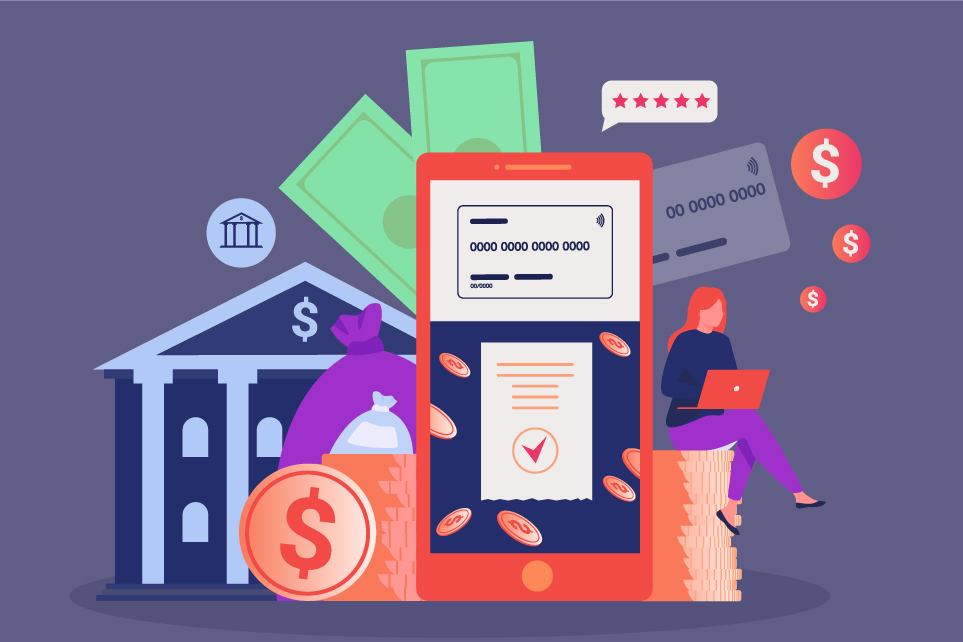As the name suggests, FinTech is the combination of Finance and Technology. Any organization that uses IoT devices (Internet of Things), i.e., mobile devices, internet, cloud services, or software technology for performing financial assistance are considered as part of the Fintech domain.
According to a study, from 2015 to 2018, India had over 1,500 fintech start-ups and surpassed Germany, United Kingdom, and Singapore as the fastest growing ecosystems in this sector.
Initially, it was limited to backend systems, but now it is being abundantly used in online payments, mobile payments, funds management, stocks, etc. In other words, it has changed the financial ecosystem and has transformed the core process of payment methods.
Multi-currency digital payments are a norm, peer-to-peer lending is now more popular than going through a process of application at a bank, and insurance claims can be filled out from your home within a few minutes.
Let’s see the impact of these applications on the financial sector and how they have transformed it:
Digital Payments
The use of mobile wallets compared to credit cards is increasing. The ease of use of net banking allows individuals to send money without visiting the banks physically and process all types of payments more cost-effectively.
Investment and Wealth Management
Investment solutions enable people to hold their assets in a single place in addition to helping manage their financial portfolios at will and from anywhere in the world with a central management window.
The data analysis tools used can increase automation, especially in asset rebalancing. The cloud-based bot-enabled platforms are being used for advising users about better asset management and investment.
Loans
Applying for a loan can now be done right from the mobile phones. New data points and the better risk models are expanding the credits to the non-affordable populations. Also, customers can request credit reports multiple times of the year without having to reveal their score. This makes the whole backend of the lending world much more transparent.
Trading
Online trading applications have given individuals with internet access, the ability to invest in the market, monitor risk in real-time, and share knowledge as well on the online platform itself.
Personal Banking
Customers can now manage their money online. Banks and start-ups in this space are creating online wallets and profiles to maintain services that translate into a better and faster user experience, which contributes mainly to the digitization world.
InsurTech
Insurance companies are also using digital solutions to provide a better customer experience. Users can perform activities such as acquire new services and fill out claims directly from the app at any time, without going through the tedious process, which earlier they had to follow.
Functional Aspects of Fintech Applications
Now let’s take a look at the functional aspects of these fintech applications are and how they cater to our needs:
Personalization
With the help of technology like artificial intelligence and machine learning, financial applications can now better understand the users’ wants and desires, with real data. Finding a way to personalize a demand for financial services according to the user’s preferences, makes transactions more enjoyable and less burdensome.
Integration
Integration has two aspects for FinTech apps: the capability of integrating with several other systems and cross-platform synchronization.
Both individuals and entrepreneurs require a variety of services such as mobile payments, crowdsourcing, or financial resource management services. If you have a financial application that runs on multiple platforms, it is suggested to have your setup shared between all these platforms and having a consistent experience.
Authentication
With money being such a sensitive subject we need trustworthy and secure apps, people will be wary of using a brand new app that does not have outstanding security measures. Two-factor authentication is the right way of securing digital accounts.
Two-factor authentication is the most widely used security measure for these types of applications. Third-party services such as Google Authenticator, Digi Pass, etc., allow verification via SMS or a unique app that the user installs on their device. That way, they have full control over accessing the account!
Blockchain
Blockchain FinTech technology is on the rise and is becoming a necessity for Fintech companies. Using this technology will create further confidence in the users and clients as it is the building block for the app’s transparency. Blockchain development does not allow a single transaction to be modified or deleted once it has been confirmed, so any mistakes must be counteracted with another operation.
Stock-trading apps use Blockchain to track the complete lifecycle of a financial transaction. They create secure financial products at minimal cost and make financial services, both functionally and technologically sophisticated and secured.
Data Tracking and Analysis
No matter which FinTech app is being used, users want to be able to track and analyse their financial activities and transaction history. The users can nowadays track their economic movements and easily access their transaction history.
Having the information accessible in a single dashboard and with graphics or visual representations always helps the user have a better experience online and allows them to understand fluctuations in their financial habits with reliable insights easily.
Conclusion
FinTech has the potential to transform the business’s nature with the latest technologies, including building a better relationship between merchants and customers, and anything that will solve the problem of financial inclusion. We at AppleTech have the experience and expertise in building portals, mobile and web applications for the financial industry as well as many other domains. Come to us with your idea and watch it develop into a solution.

